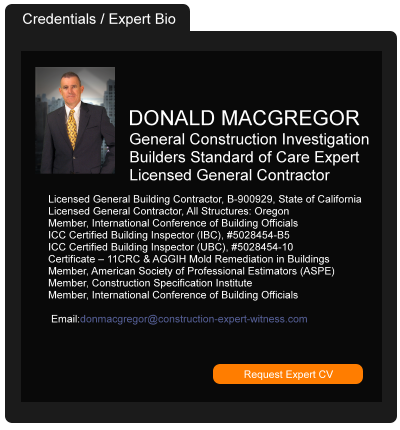Allegations Versus “True Facts”: Which Govern the Duty to Defend? Bonus! A Georgia Court Clears Up What the Meaning of “Is” Is
December 11, 2023 —
Rachel E. Hudgins & Syed S. Ahmad - Hunton Insurance Recovery BlogCourts scrutinize a complaint’s factual allegations to decide whether the allegations trigger a duty to defend.
[1] If the facts unambiguously exclude coverage, there is no duty to defend.
[2] But what if the factual allegations fall within a policy exclusion, but the allegations are untrue or questionable? What if the true facts would mean the exclusion doesn’t apply? In that case, many courts have found that the insurer should base its decision on the policyholder’s version of the “true facts.”
[3] An insurer can’t rely on the complaint’s allegations to deny coverage when the facts that the insurer knows or can ascertain show that the claim is covered.
[4]
A recent case,
United Minerals & Properties Inc. v. Phoenix Insurance Co., No. 4:23-cv-00050 (N.D. Ga.), illustrates these policy interpretation principles.
Reprinted courtesy of
Rachel E. Hudgins, Hunton Andrews Kurth and
Syed S. Ahmad, Hunton Andrews Kurth
Ms. Hudgins may be contacted at rhudgins@HuntonAK.com
Mr. Ahmad may be contacted at sahmad@HuntonAK.com
Read the court decisionRead the full story...Reprinted courtesy of
COVID-19 Could Impact Contractor Performance Bonds
March 30, 2020 —
Ben Williams & MG Surety - Construction ExecutiveAs COVID-19 continues to expand around the United States and the world, it may only be a matter of time before U.S. construction projects are affected by the virus. Performance bonds guarantee that a project will be completed by a contractor according to the contract. However, what if a contractor cannot complete a project on time due to widespread disease? What, if any, impact could the virus have on a contractor’s surety bond program?
Risk Factors
Several risks associated with the virus could trigger a performance bond claim.
1. Materials. The Chinese account for a large supply of construction materials, including steel, copper, cabinetry, etc. An inability to obtain these materials could significantly delay or stop a project all together. Even if a contractor is able to obtain them from other sources, it may be at a significantly higher cost than they put into the bid.
2. Labor. There is already a shortage of qualified labor in the construction industry. Additionally, construction already lends itself to the spreading of viruses; workers are often in close proximity, handling common materials, and they may not have an easily accessible place to wash their hands. Furthermore, even though many now have paid sick leave, there is often pressure not to use it. These things could magnify the labor shortage and make it difficult to complete projects on time.
3. Safety. Finally, the world is having a serious shortage of respirators. Because of widespread panic, many people have been purchasing N95 respirators—so much that the Surgeon General has asked people to stop buying them. It has created a shortage for people who really need them, like contractors. If contractors can’t get these safety masks, certain trades will either be unable to work, or risk continuing the project without masks, which would endanger workers and open them up to OSHA penalties.
Reprinted courtesy of
Ben Williams and MG Surety, Construction Executive, a publication of Associated Builders and Contractors. All rights reserved.
Read the court decisionRead the full story...Reprinted courtesy of
Mr. Williams may be contacted at
benw@mgsuretybonds.com
Indemnity Provision Provides Relief to Contractor; Additional Insured Provision Does Not
January 06, 2016 —
Tred R. Eyerly – Insurance Law HawaiiThe court found that the contractor was entitled to relief under the contractual indemnity provision, but not the policy's additional insured clause. Chatelain v. Fluor Daniel Constr. Co., 2015 La. App. LEXIS 2257 (Ct. App. La. Nov. 10, 2015).
Following Hurricanes Katrina and Rita, FEMA retained Fluor Enterprises, Inc. as a contractor to transport and install FEMA trailers. Fluor entered a Blanket Ordering Agreement (BOA) with Bobby Reavis Contracting, Inc. to transport and install the trailers. The BOA provided Reavis would defend and indemnify Fluor from all liability arising from the subcontractor's work. Reavis also agreed to name Fluor as an additional insured under its CGL policy.
Reavis installed a FEMA trailer for Connie Chatelain. Ms. Chatelain was injured when she fell exiting her FEMA trailer. She sued Fluor and Reavis. Fluor tendered the suit to Reavis and Reavis' insurer, Guilford Insurance Company. The tender was rejected and Fluor filed a third-party action demanding indemnification, reimbursement of all legal expenses and damages for insurer misconduct.
Read the court decisionRead the full story...Reprinted courtesy of
Tred R. Eyerly, Insurance Law HawaiiMr. Eyerly may be contacted at
te@hawaiilawyer.com
Bad Faith Claim for Inadequate Investigation Does Not Survive Summary Judgment
May 20, 2015 —
Tred R. Eyerly – Insurance Law HawaiiThe insured's claim for bad faith investigation regarding their hail damage claim did not survive the insurer's motion for summary judgment. Amarillo Hospitality Tenant, LLC v. Mass. Bay Ins. Co., 2015 U.S. Dist. LEXIS 56228 (N. D. Tex. April 29, 2015).
A hailstorm caused damage to the Courtyard Marriot. The day after the storm, the insured inspected the roof of the hotel and observed damage to a sign and some aluminum vent tubes. No damage to the roof itself was observed. Subsequently, leaks were found on the tenth floor of the hotel. A public adjuster concluded that the roof had sustained damage during the hailstorm.
The insured filed a claim with Massachusetts Bay Insurance Company. The insurer paid for the cost of repairing the damaged sign. To determine whether the damage to the roof was caused by the hailstorm, the insurer hired Donna Engineering, who conducted two inspections of the roof. Both inspections concluded that the hailstorm did not cause damage to the roof. Consequently, the claim was denied.
Read the court decisionRead the full story...Reprinted courtesy of
Tred R. Eyerly, Insurance Law HawaiiMr. Eyerly may be contacted at
te@hawaiilawyer.com
LA Metro To Pay Kiewit $297.8M Settlement on Freeway Job
December 08, 2016 —
Greg Aragon – Engineering News-RecordThe Los Angeles County Metropolitan Transportation Authority (LA Metro) has reached an agreement with Kiewit Corp. and will pay the contractor $297.8 million for project change orders on the Interstate 405-Sepulveda Pass Widening Project, in Los Angeles.
Read the court decisionRead the full story...Reprinted courtesy of
Greg Aragon, Engineering News-RecordENR may be contacted at
ENR.com@bnpmedia.com
Tick Tock: Don’t Let the Statute of Repose or Limitations Time Periods Run on Your Construction Claims
February 28, 2022 —
Gus Sara - The Subrogation StrategistIn Wascher v. ABC Ins. Co., No. 2020AP1961, 2022 Wisc. App. LEXIS 110 (Feb. 9, 2022), the Court of Appeals of Wisconsin considered whether the plaintiffs were barred — by Wisconsin’s 10-year statute of repose for improvements to real property claims and the six-year statute of limitations for breach of contract claims — from bringing a lawsuit against the original builders of their home. The plaintiffs alleged negligence and breach of contract against the masonry subcontractors, asserting that they improperly installed the exterior stone cladding. The court found that the plaintiffs’ claims against the original builders were time-barred.
In 2005, the plaintiffs, Thomas and Pamela Wascher (the Waschers) retained Mathwig Builders (Mathwig) as the general contractor for the construction of their home in Greenville, Wisconsin. Mathwig subcontracted defendants Natural Surfaces, LLC (Natural Surfaces) and Carved Stone Creations (CSC) to install the stone cladding on the exterior walls and patio for the home. On November 3, 2008, the Township of Greenville inspected the home and granted the Waschers permission to occupy the residence. The Waschers moved into the home within the next few weeks. In early 2009, the Waschers discovered efflorescence on the stone cladding for the patio. In 2010, the Waschers hired CSC to repair the stone cladding. CSC removed some stone, which revealed that flashing had not been installed behind the stone, which caused water to infiltrate the stone and patio.
Read the court decisionRead the full story...Reprinted courtesy of
Gus Sara, White and WilliamsMr. Sara may be contacted at
sarag@whiteandwilliams.com
The EPA and the Corps of Engineers Propose Another Revised Definition of “Waters of the United States”
February 14, 2022 —
Anthony B. Cavender - Gravel2GavelOn December 7, 2021, the most recent proposed revision to the Clean Water Act’s term, “Waters of the United States” was published in the Federal Register. (See 86 FR 69372.) Comments on this proposal must be submitted by February 7, 2022. This term controls the scope of federal regulatory powers in such programs as the development of water quality standards, impaired waters, total maximum daily loads, oil spill prevention, preparedness and response plans, state and tribal water quality certification programs, the National Pollutant Discharge Elimination System (NPDES) permit program, and the Corps of Engineers’ dredge and fill program. The Environmental Protection Agency (EPA) and the Corps of Engineers have jointly drafted this comprehensive proposed rule, which also responds to President Biden’s Executive Order 13990, issued in January 2021.
Background
The agencies noted that they have repeatedly defined and re-defined “Waters of the United States” since the Clean Water Act was enacted in 1972. This level of sustained commitment is unique to this program, perhaps reflecting the importance of the programs that are implemented through the Clean Water Act. The most recent rulemaking efforts took place in 2015, 2017, 2020 and now 2022, and the Supreme Court has issued several landmark rulings in response to these efforts. See City of Milwaukee v. Illinois, 451 US 304 (1981), United States v. Riverside Bayview, 474 US 121 (1985), SWANCC v. United States, 531 US 159 (2001), Rapanos v. United States, 547 US 715 (2006), National Association of Manufacturers v. Department of Defense, 138 S Ct 617 (2018), and County of Maui, Hawaii v. Hawaii Wildlife Fund, 140 S, Ct 1462 (2020). The rules promulgated in 2015 and entitled, “Clean Water Act: Definition of Waters of the United States” expanded the scope of federal regulatory jurisdiction, but the 2020 rule, entitled the “Navigable Waters Protection Rule,” contracted that scope. Now, the agencies have proposed the “Revised Definition of ‘Waters of the United States,’” which will rescind the 2020 rule and inevitably restore something of the scope of the 2015 rule by returning to the familiar “1986 rules” that were issued by the Corps of Engineers in 1986 and EPA in 1988, as modified by the recent Supreme Court decisions mentioned above. Both the 2015 and 2020 rules were mired in litigation and the Corps and EPA view the resort to the 1986 rules as a fresh start for the Clean Water Act. In short, the topsy-turvy history of regulation under the Clean Water Act continues.
Read the court decisionRead the full story...Reprinted courtesy of
Anthony B. Cavender, PillsburyMr. Cavender may be contacted at
anthony.cavender@pillsburylaw.com
Sustainability Is an Ever-Increasing Issue in Development
November 21, 2022 —
Scott L. Baker - Los Angeles Litigation BlogBusinesses must be open to change. It is essential to survive in the business world, regardless of the industry. This goes hand-in-hand with the necessity to change along with consumer needs and values as well.
With the increasing emphasis on sustainability across industries, many businesses have had to make their processes and products more environmentally friendly. However, in terms of real estate construction, there are some challenges.
SUSTAINABILITY IN NEW CONSTRUCTION IS NOW A MATTER OF LAW – NOT JUST A PREFERENCE
The push to become greener comes from many fronts. Property owners, potential buyers and even lawmakers all expect the real estate industry to go greener. For example, homeowners and businesses often want their properties to meet their personal values of sustainability.
Read the court decisionRead the full story...Reprinted courtesy of
Scott L. Baker, Baker & AssociatesMr. Baker may be contacted at
slb@bakerslaw.com


































































